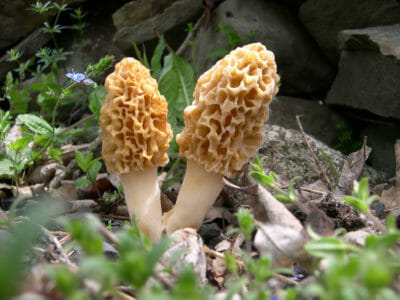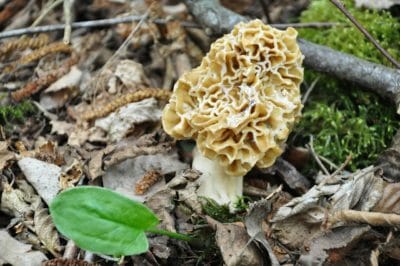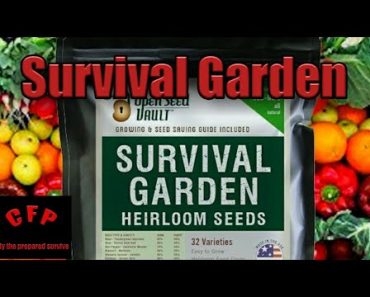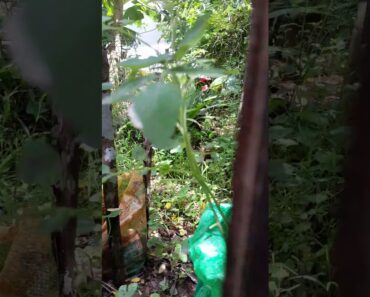The time for morel mushroom hunting is upon us. The temperatures are starting to rise, and signs of spring are popping up all around us. That means morel mushroom season is here as well.
Morel mushrooms are a delicacy, selling for hundreds of dollars per pounds. They are a treat and only bloom once a year. You can’t walk to your local grocery store and purchase them. The only options are to find them yourself or buy them from someone else.
Luckily, those of us who live in the upper half of the United States can hunt for morel mushrooms in the spring. Here is what you need to know.
When Can I Hunt For Morel Mushrooms?
In most areas, morel mushrooms start to bloom in late April. Their growing season lasts throughout early June. The season will depend on your area.
If it is your first year hunting mushrooms, ask local, experienced hunters when they typically find them. Also, start hunting a month or so before you expect to see them to increase your chances.
The best time to find morel mushrooms is after heavy rainfall when the air is warm and humid. Keep an eye on the temperature. Morels tend to be a bit picky about the temperature.
They enjoy the weather when it gets around 60 degrees and above throughout the day. Night temperatures should hover around 40 degrees. Soil temperatures will be between 45 and 50 degrees when morels start to develop.
Get Dependable Backup Power Directly From The Sun
Where Should I Look For Morel Mushrooms?
In the early spring, southern-facing hills will be the ideal place to check for mushrooms. They receive more sunlight in this area. As the season gets closer to June, morel mushrooms grow more on northern-facing hills.
Here are some other tips for locations that morel mushrooms enjoy.
- Morels love to grow near trees. Ash, poplar, apple and elm trees are favorite choices!
- Dying and dead trees are common places as well.
- Look for loamy soil, similar to what is at the bottom of creeks. Loamy soil drains well, is moist and has a good mixture of clay, sand and decaying matter.
- Morels love burned sites. Research past wildfires in your area, or look in areas that have experienced wildfires years ago. The mushrooms love the nutrients that burned trees put back into the soil. These sites are more common towards the Western part of the United States. However, anywhere that has experienced a brush or forest fire might attract morel mushrooms.
- Previously flooded areas also attract morel mushrooms. Check locally for areas that were recently disturbed by water, or even disturbed in the past! That means look near creeks, streams, and river banks.
You Found Morels, Now What?
Carry your findings in a mesh bag! As you walk through the woods, the mushrooms will release spores. The spores will increase the chances of mushrooms growing in that area in the future. You are encouraging future growth!
Remember to not pick all of the mushrooms in the area. You might want to, especially after searching for a few hours. However, leaving mushrooms means they will drop spores and allow you to enjoy morels in the following years.
Once you start to find morel mushrooms, it is a great idea to keep a record of where you found them. They tend to pop up in the same areas each year. You will have an idea where to look the following year. Thoroughly check the surrounding areas as well. Where there is one, there tends to be more!
Make sure they are morel mushrooms. Several different poisonous, false morel mushrooms can cause you to get sick if you make them for dinner. Make sure you identify correctly. Real morel mushrooms have these characteristics:
- Two to four inches long

Morel Mushrooms
- Full of ridges and pits
- Looks like a sponge
- Pale yellow to dark gray
- Cap is attached to stem
- Hollow from the bottom of the stem to the top of the cap. A true morel is always hollow!
Before you cook the morels, soak them in water. Morels are hollow, so bugs, sand, and debris tend to collect in their hollow stem. Soaking them for a few hours allows all of the nasties to come out. If you found your morels in a creek or riverbank, it is wise to cut them lengthwise and then soak to remove all of the sand.
Enjoy Your Time
Morel hunting is fun; don’t take it too seriously! It is an excellent activity for kids, making it a fantastic family activity. Determined kids, who are lower to the ground, might spot morels better than adults. When they do find them, their excitement will be contagious!
Now, head home and enjoy your morel snack. Sautee mushrooms lightly in butter or cover in a batter for a delicious meal. The earthy, meaty taste is appealing for adults and kids.



























